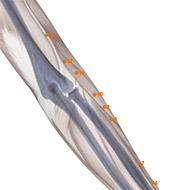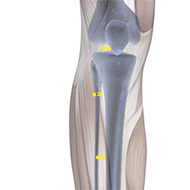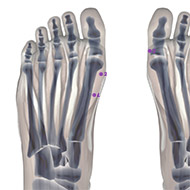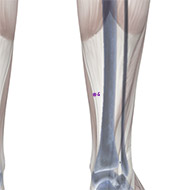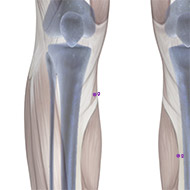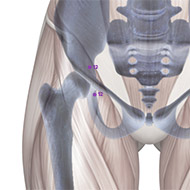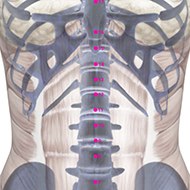Rated Acupoints
Acupuncture treatment for Altitude Sickness
Rated Acupoints
3
Altitude sickness—also known as acute mountain sickness (AMS), is a pathological effect of high altitude on humans, caused by acute exposure to low partial pressure of oxygen at high altitude. Although minor symptoms such as breathlessness may occur at altitudes of 1,500 meters (5,000 ft), AMS commonly occurs above 2,400 meters (8,000 ft). It presents as a collection of nonspecific symptoms, acquired at high altitude or in low air pressure, resembling a case of “flu, carbon monoxide poisoning, or a hangover”.1
It is hard to determine who will be affected by altitude sickness, as there are no specific factors that correlate with a susceptibility to altitude sickness. However, most people can ascend to 2,400 meters (8,000 ft) without difficulty. Acute mountain sickness can progress to high altitude pulmonary edema (HAPE) or high altitude cerebral edema (HACE), both of which are potentially fatal, and can only be cured by immediate descent to lower altitude or oxygen administration. Chronic mountain sickness is a different condition that only occurs after long term exposure to high altitude.2
CONTENTS
SYMPTOMS
CAUSES
TREATMENTS
SYMPTOMS
One person may experience one or more symptoms when they get altitude sickness. These symptoms include headache, which is usually throbbing and it gets worse during the night and when you wake up. It is common to have a reduced appetite, stomach problems, vomiting, weakness and tiredness. In severe cases, a significant reduction of energy is experienced. In addition, insomnia is also reported with dizziness. Swelling of hands, feet, and face is also common with nose bleeding and shortness of breath.3
CAUSES
Altitude sickness can first occur at 1,500 meters, with the effects becoming severe at extreme altitudes (greater than 5,500 meters). Only brief trips above 6,000 meters are possible and supplementary oxygen is needed to avert sickness. As altitude increases, the available amount of oxygen to sustain mental and physical alertness decreases with the overall air pressure. Dehydration due to the higher rate of water vapor lost from the lungs at higher altitudes may contribute to the symptoms of altitude sickness.4
The rate of ascent, altitude attained, amount of physical activity at high altitude, as well as individual susceptibility, are contributing factors to the onset and severity of high-altitude illness. Altitude sickness usually occurs following a rapid ascent and can usually be prevented by ascending slowly. In most of these cases, the symptoms are temporary and usually abate as altitude acclimatization occurs. However, in extreme cases, altitude sickness can be fatal.
At high altitude, 1,500 to 3,500 meters (4,900 to 11,500 ft), the onset of physiological effects of diminished respiratory oxygen pressure includes decreased exercise performance and increased ventilation (lower arterial partial pressure of carbon dioxide). While arterial oxygen transport may be only slightly impaired the arterial oxygen saturation, generally stays above 90%. Altitude sickness is common between 2,400 and 4,000 m because of the large number of people who ascend rapidly to these altitudes.5
TREATMENTS
According to Traditional Chinese Medicine, the three patterns are affected qi, blood and body fluids. First, the spleen qi becomes deficient, while the blood is also deficient. The progression of deficient qi will affect other organs as the stomach, heart and lungs become deficient. The spleen’s function of transportation and transformation diminishes and creates accumulations internally, as well as externally contracted wind edema yin or yang, depending upon the pre-existing conditions individually present. If this problem is not counterbalanced, the kidney yang is unable to support the spleen yang. Ultimately, they are unable to support one another. This is severe internal cold, which progresses to yang collapse with liver and heart blood deficiency. In extreme cases, liver blood deficiency progresses to internal wind.
Acupuncture Points used to treat this condition are the following, for spleen qi deficiency: R-4, R-12, ST-28, ST-36 moxa/tonify SJ-6, SP-6, SP-9 (damp accumulation) sedate. Alternate D-4, D-6, BL-20, BL-22, BL-23, BL-29 moxa/tonify; LI-10, SP-6 sedate. LG Qi Deficiency: LG-5, LG-7 tonify. HT Qi Deficiency: HT-7 tonify. SP Yang Deficiency: Add points LI-10, SP-6 sedate. K Yang Deficiency: points K-1, K-2 moxa.6
Footnotes
- What is altitude sickness? – webmd.com – 2017, http://www.webmd.com/lung/tc/altitude-sickness-topic-overview
- Definition of Altitude sickness – medicinenet.com – 2017, http://www.medicinenet.com/script/main/art.asp?articlekey=8584
- Altitude Sickness – my.clevelandclinic.org – 2017, http://my.clevelandclinic.org/health/diseases_conditions/hic-altitude-sickness
- Altitude Sickness: Causes, Symptoms and Diagnosis – medicalnewstoday – 2016, http://www.medicalnewstoday.com/articles/179819.php
- Altitude sickness – wikipedia.org – 2017, https://en.wikipedia.org/wiki/Altitude_sickness
- Altitude Sickness: An Integrated Perspective – acupuncturetoday.com – 2003, http://www.acupuncturetoday.com/mpacms/at/article.php?id=28250
LU01
LU02
LU03
LU04
LU05
LU06
LU07
LU08
LU09
LU10
LU11
LI01
LI02
LI03
LI04
LI05
LI06
LI07
LI08
LI09
LI10
LI11
LI12
LI13
LI14
LI15
LI16
LI17
LI18
LI19
LI20
ST01
ST02
ST03
ST04
ST05
ST06
ST07
ST08
ST09
ST10
ST11
ST12
ST13
ST14
ST15
ST16
ST17
ST18
ST19
ST20
ST21
ST22
ST23
ST24
ST25
ST26
ST27
ST28
ST29
ST30
ST31
ST32
ST33
ST34
ST35
ST36
ST37
ST38
ST39
ST40
ST41
ST42
ST43
ST44
ST45
SP01
SP02
SP03
SP04
SP05
SP06
SP07
SP08
SP09
SP10
SP11
SP12
SP13
SP14
SP15
SP16
SP17
SP18
SP19
SP20
SP21
HT01
HT02
HT03
HT04
HT05
HT06
HT07
HT08
HT09
SI01
SI02
SI03
SI04
SI05
SI06
SI07
SI08
SI09
SI10
SI11
SI12
SI13
SI14
SI15
SI16
SI17
SI18
SI19
BL01
BL02
BL03
BL04
BL05
BL06
BL07
BL08
BL09
BL10
BL11
BL12
BL13
BL14
BL15
BL16
BL17
BL18
BL19
BL20
BL21
BL22
BL23
BL24
BL25
BL26
BL27
BL28
BL29
BL30
BL31
BL32
BL33
BL34
BL35
BL36
BL37
BL38
BL39
BL40
BL41
BL42
BL43
BL44
BL45
BL46
BL47
BL48
BL49
BL50
BL51
BL52
BL53
BL54
BL55
BL56
BL57
BL58
BL59
BL60
BL61
BL62
BL63
BL64
BL65
BL66
BL67
KD01
KD02
KD03
KD04
KD05
KD06
KD07
KD08
KD09
KD10
KD11
KD12
KD13
KD14
KD15
KD16
KD17
KD18
KD19
KD20
KD21
KD22
KD23
KD24
KD25
KD26
KD27
PC01
PC02
PC03
PC04
PC05
PC06
PC07
PC08
PC09
TB01
TB02
TB03
TB04
TB05
TB06
TB07
TB08
TB09
TB10
TB11
TB12
TB13
TB14
TB15
TB16
TB17
TB18
TB19
TB20
TB21
TB22
TB23
GB01
GB02
GB03
GB04
GB05
GB06
GB07
GB08
GB09
GB10
GB11
GB12
GB13
GB14
GB15
GB16
GB17
GB18
GB19
GB20
GB21
GB22
GB23
GB24
GB25
GB26
GB27
GB28
GB29
GB30
GB31
GB32
GB33
GB34
GB35
GB36
GB37
GB38
GB39
GB40
GB41
GB42
GB43
GB44
LV01
LV02
LV03
LV04
LV05
LV06
LV07
LV08
LV09
LV10
LV11
LV12
LV13
LV14
GV01
GV02
GV03
GV04
GV05
GV06
GV07
GV08
GV09
GV10
GV11
GV12
GV13
GV14
GV15
GV16
GV17
GV18
GV19
GV20
GV21
GV22
GV23
GV24
GV25
GV26
GV27
GV28
CV01
CV02
CV03
CV04
CV05
CV06
CV07
CV08
CV09
CV10
CV11
CV12
CV13
CV14
CV15
CV16
CV17
CV18
CV19
CV20
CV21
CV22
CV23
CV24



